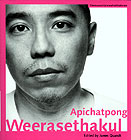|
|
|
|
Essays (book reviews) |
|
Apichatpong Weerasethakul, |
 |
|
In
the remarkably fickle world of international film festivals – Lav Diaz and
Miguel Gomes are in, Bruno Dumont and Wong Kar-wai are out – Thai director Apichatpong
Weerasethakul impresses us with his staying power: five features since 2000 (Mysterious Object at Noon, Blissfully Yours, Tropical Malady, Syndromes
and a Century, Uncle Boonmee Who Can Recall His Past Lives), each more ambitious and impressive than the last.
Plus – an essential multi-tasking skill for the portfolio of the
post-postmodern artist – a ceaseless stream of short-form video works and
audiovisual art gallery installations.
No
one who has ever met this guy named Joe (as he is happy to be known, and as the
writers of this book are pleased to call him), however, would be rushing to
describe him as a careerist. Softly spoken, thoughtful, with a very personal
(and not especially theoretical) relation to his work, Apichatpong lives to
create.
His
films, which usually change course 180 degrees between conception and
completion, are thoroughly organic, taking every advantage of accidents,
improvisation, elements brought in by collaborators on both crew and cast; he
speaks of the experience of the shoot itself (of which he gives an indelible
portrait in the 2005 short Worldly
Desires) as more rewarding, more alive than the finished product. Three
texts by Apichatpong add significantly to the achievement of this new book in
the outstanding series co-published (sometimes in English) by the Austrian
Filmmuseum and Synema.
To
get the measure of Apichatpong, it seems, one needs a mixture of cultural
studies (for the complex and intricate Thai background), art criticism (for the
restless multimedia drive), and film studies. Editor James Quandt, who provides
ninety pages of text as well as an interview and (differently) an ‘exchange’
with the filmmaker, is especially strong (as a regular Artforum writer) in the second area – he deftly applies the international Biennale-style artspeak of
hybridity, shape-shifting and border-crossing to the work.
For
the cultural context, Quandt wisely brings in such impressive local experts as
Kong Rithdee and Benedict Anderson, the latter best known as author of the oft-cited
1983 social study Imagined Communities.
And a generously lengthy Annotated Filmography brings in the voices of gifted
critics from around the world, including Luis Miranda and Bert Rebhandl.
But,
for all the erudition and illumination on display, Apichatpong remains – and
his films offer the handy metaphors – a mysterious object, elusive beast, or
ghostly spirit. As virtually every contributor to this book is painfully aware,
it is all too easy to collapse into waffly, mystical mumbo-jumbo when celebrating
these films and videos, taking refuge in evocations of unfathomable mystery and
cryptic poetics – or opting for the predictable draw-the-circle game of
‘kindred spirits’ in contemporary world cinema: Hou, Jia, Hong, Alonso …
It
is fun to read, for instance, the celebrity-cameo from Tilda Swinton (in
correspondence with Mark Cousins). But this is the same old ethereal song, as
she muses how her children, when older, will “need these archaeological remains
of sentient – cohesive – possibilities, of post-choice harmony, these reminders
of the natural order of gesture, of faith, of acceptance.” Say what?
Despite
flickers of concrete discussion, I found it hard, from this book, to get a firm
grasp on exactly how Apichatpong stages, frames, cuts, mixes and treats his
images and sounds. Several contributors make tentative moves beyond
psychobabble by drawing up lists of meaningful elements for further research
and articulation, as in this beauty by Quandt (on Mysterious Object at Noon):
An inadvertent catalogue of modes of
transit (track, train, car, jitney, elephant, boat, and jet plane), of Thai
superstitions (protective amulets and necklaces) and uncanny beings (spirit
houses, ghosts, witch tigers), of ways of storytelling (writing, talking, drawing,
singing, signing, filmmaking), and types of
abandonment and abuse …
At
least Apichatpong Weerasethakul is a
book that leaves you wanting more, and believing firmly in the inexhaustible
depth of the work – an impression that would surely please the filmmaker, and
which he will no doubt nurture in his future creations.
© Adrian Martin July 2009 |
![]()